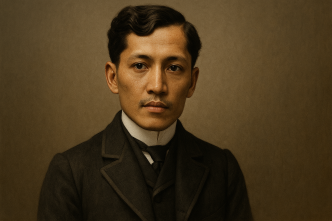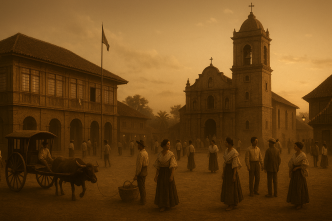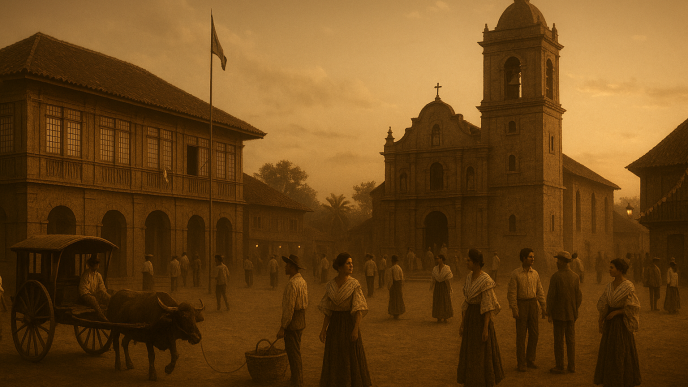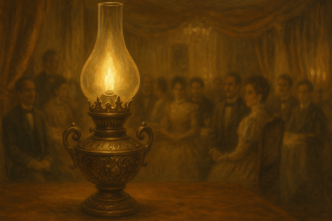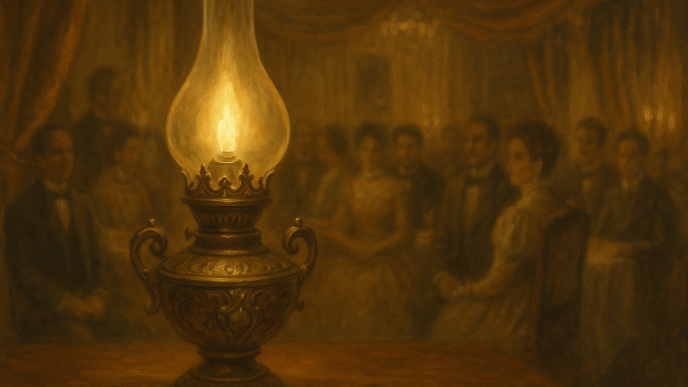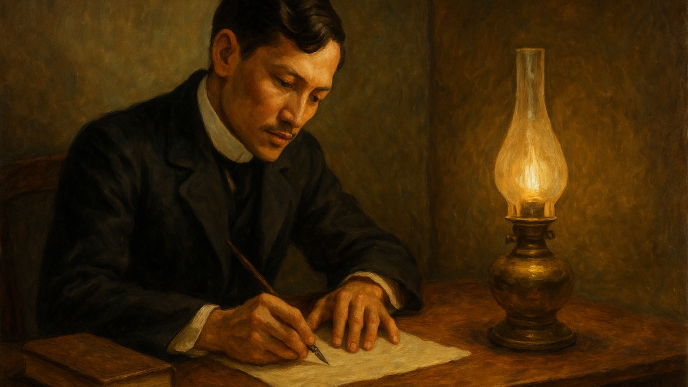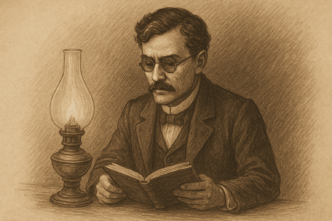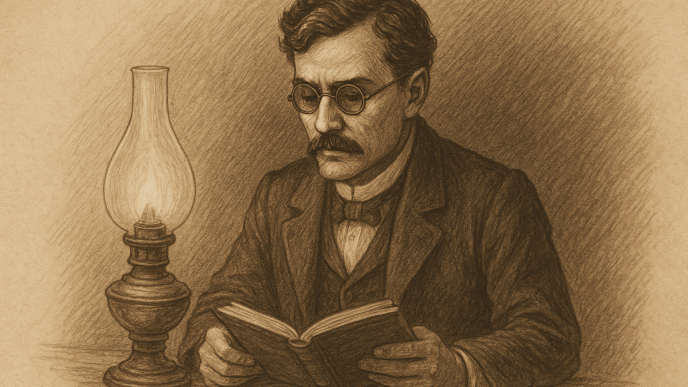Jose Rizal’s output is astonishingly broad for a life that ended at 35. He wrote novels and essays that shook an empire, poems that still get memorized in classrooms, a play that won Manila’s top literary prize, translations and children’s stories, and a surprising amount of visual art — from oil portraits to terracotta statuettes and a gigantic outdoor relief map.
What follows is a practitioner’s tour of his literary corpus, organized by form, with notes on dating, venues, and where to see or read key pieces today.
Novels and Longer Fiction
Noli Me Tángere (1887, Berlin). Rizal’s first novel, a realist autopsy of colonial society whose publication in Europe ignited debate from Manila to Madrid. Together with its sequel, it anchored the Propaganda Movement’s case for reform. (For an accessible English text online, see The Social Cancer at Project Gutenberg.)
El Filibusterismo (1891, Ghent). The darker, tighter sequel that returns Crisóstomo Ibarra in disguise and follows a revolt that curdles into tragedy. The printing in cash-starved Ghent forced Rizal to slash costs and rush proofs, a production backstory often noted in guides and readers.
Unfinished Third Novel(s)
- Makamisa (begun 1892): a Tagalog satire discovered by historian Ambeth Ocampo in 1987; Rizal later restarted in Spanish but left the project incomplete.
- Other fragments (for example, a Dapitan sketch) survive in manuscript form and are discussed in studies of his papers.
Political, Historical, and Cultural essays
“El Amor Patrio” (Love of Country, 1882). Rizal’s first published essay (pen name Laong Laan), printed in Diariong Tagalog (Spanish text with a Tagalog translation by Marcelo H. del Pilar). It framed patriotism as ethical duty and intellectual work.
“Filipinas dentro de cien años” (The Philippines a Century Hence, 1889–1890). A four-part forecast serialized in La Solidaridad, tracing possible futures from assimilation to independence based on structural trends — education, trade, migration.
“Sobre la indolencia de los filipinos” (The Indolence of the Filipinos, 1890). A data-driven rebuttal of racist stereotypes that locates “indolence” in colonial policy, climate, and economic incentives, not character.
Annotations to Antonio de Morga’s Sucesos de las Islas Filipinas (Paris, 1890). Rizal’s scholarly counter-history, meant to “awaken” historical consciousness by showing pre-colonial capability obscured by friar chronicles. You can read scans and reprints online.
Pamphleteering and Letters
- “La visión del fray Rodríguez” (1889)—a satirical reply to a friar’s attack on the Noli; published under the pen name Dimas-Alang.
- “To the Young Women of Malolos” (1889) — a Tagalog letter praising middle-class women who demanded a night school; a feminist classic in the canon.
Language reform. In 1890, Rizal published “Sobre la nueva ortografía de la lengua tagala,” proposing a rationalized Tagalog spelling (crediting T. H. Pardo de Tavera for inspiration).
Children’s Literature and Folklore
“The Monkey and the Turtle” (July 1889, Trübner’s Oriental Record): Rizal’s illustrated retelling of a Philippine folk tale, widely cited as the formal birth of Philippine children’s literature/comics.
“Specimens of Tagal Folklore” (May 1889): Proverbs, riddles, and verse compiled for the same journal.
A Note on Attribution
The oft-memorized “Sa Aking mga Kabata” is now considered apocryphal; there is no manuscript, and its vocabulary and orthography don’t match an eight-year-old Rizal in 1869.
Poetry and Songs
A la juventud filipina (To the Philippine Youth, 1879). Written at 18; first prize at the Liceo Artístico-Literario de Manila. It exhorts the youth to take up arts and science for the motherland.
Mi último adiós (1896). The valedictory poem secretly smuggled out of Fort Santiago, hidden in an alcohol stove (not a lamp), and given to his sister Narcisa on the eve of his execution.
Exile poems (Dapitan, 1892–95).
- Mi retiro (Oct. 22, 1895): A long meditation on quiet exile; manuscript and later printings survive.
- Himno a Talisay: A rousing song for his pupils, celebrating disciplined study, swimming, and science.
- El canto del viajero (Song of the Traveler): A lyric on wandering and longing; later widely anthologized.
Occasional pieces. Rizal also composed Himno al Trabajo for Lipa (1888), praising civic industry at a delicate political moment.
Drama and Oratory
El Consejo de los Dioses (The Council of the Gods, 1880). A classical allegory that won first prize in a Cervantes centenary contest in Manila—early proof of Rizal’s range as Hispanist and dramatist.
Junto al Pasig (1880). A one-act zarzuela performed at the Ateneo — Marian devotion and moral conflict set on the Pasig’s banks; surviving texts and stagings are documented.
“Brindis” (1884). The Madrid toast in honor of Juan Luna and Félix Resurrección Hidalgo — part aesthetic manifesto, part political tightrope — has been preserved in translations and study editions.
Visual Art and Material Works
Though better known as a writer, Rizal trained in drawing and sculpture; the National Museum of the Philippines (NMP) and the Rizal shrines preserve prime examples:
Painting and Drawing
- Portrait of Saturnina Rizal (oil, c. 1876–77). Probably his only extant oil portrait; exhibited by the NMP.
- Book/graphic art: Noli’s symbol-laden cover design and travel sketches (e.g., Berlin’s Gendarmenmarkt) are frequently reproduced in museum notes and catalogs.
Sculpture (Highlights)
- The Triumph of Science over Death (Scientia, 1890, clay). An allegorical nude with torch and skull — Rizal’s gift to Ferdinand Blumentritt; replicas stand at UP Manila and elsewhere.
- The Mother’s Revenge (1894, terracotta). A mother dog battling a crocodile, modeled in Dapitan to teach his boys a moral lesson; now in the NMP’s collection.
- Sacred Heart of Jesus (1875–77, batikuling wood). Whittled as an Ateneo student with a penknife; long venerated on campus and in Rizal exhibits.
- Josephine Sleeping (Dapitan, clay). An intimate study of Josephine Bracken; unveiled by the National Museum in 2024 and added to the national collection.
Landscape Engineering
- Relief Map of Mindanao (1892). A vast, outdoor relief in Dapitan, created with Fr. Francisco de Paula Sánchez; today a declared National Cultural Treasure.
Translations and Adaptations
Rizal translated and adapted European works for Filipino readers and family:
- Schiller’s Wilhelm Tell into Tagalog (1886).
- Five Hans Christian Andersen tales (Tagalog versions for his nieces and nephews), noted in cultural reportage and embassy programs: The Fir Tree, Thumbelina, The Ugly Duckling, The Angel, The Little Match Girl.
Correspondence and Diaries
Rizal’s letters — especially with Ferdinand Blumentritt — fill multiple volumes and chart his evolving views on reform, language, and ethnography. The National Memory Project catalogs many references; Project Gutenberg hosts period biographies and autobiographical sketches that quote his notes and diaries.
Where to Start (Reading and Viewing)
- Read the novels (Noli/Fili) in modern translations, then The Philippines a Century Hence and Indolence for the argumentative core.
- Pair that with Morga (1890) to see how Rizal “does history.”
- For poetry, try A la juventud filipina, Mi retiro, then Mi último adiós (remembering the stove story).
- Visit the National Museum’s Rizal galleries (Manila) or the shrines in Intramuros and Dapitan to encounter the paintings, terracottas, and the Mindanao relief in person.
Why Rizal’s Literary Corpus Still Matters
Rizal’s “complete works” resist a neat shelf: they cross genres to make a single argument — that a colonized people can reclaim the future through memory, criticism, discipline, and craft.
The novels dramatize; the essays diagnose; the poems console and rally; the sculptures and maps model making as knowing. Even the disputed attributions (like Sa Aking mga Kabata) are instructive: they show how a nation keeps negotiating who gets to speak for it, and why evidence matters.
